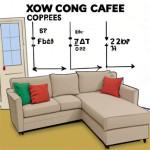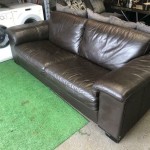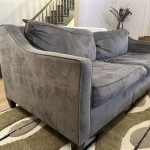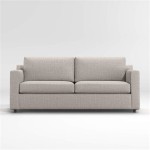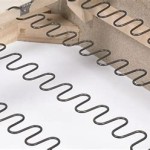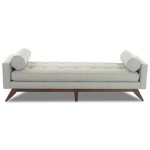What Are DFS Sofas Made Of?
DFS, a prominent furniture retailer, offers a wide range of sofas designed to cater to diverse tastes and budgets. Understanding the materials used in their construction is crucial for consumers seeking durability, comfort, and value. This article explores the various components typically found in DFS sofas, shedding light on their properties and contributing to informed purchasing decisions.
The core structure of a DFS sofa, often referred to as the frame, plays a vital role in its overall strength and longevity. Common frame materials include hardwood, softwood, and manufactured wood products. Hardwood, such as oak, ash, or beech, is known for its robustness and resistance to warping, making it a preferred choice for high-quality sofas. Softwood, including pine and fir, is generally less expensive but may be more susceptible to damage. Manufactured wood, like particleboard or plywood, offers a cost-effective alternative but may not provide the same level of durability as solid wood.
Supplementing the frame are various support systems designed to enhance comfort and prevent sagging. These systems typically involve springs, webbing, or a combination of both. Traditional coil springs, connected by wire, offer excellent support and a bouncy feel. Sinuous springs, or "S" springs, are zig-zag shaped wires stretched across the frame, providing a firmer, more contemporary sit. Webbing, often made of elastic or jute, provides a supportive base for cushions and contributes to the overall comfort of the sofa.
Padding materials are essential for comfort and contribute significantly to the sofa's shape and feel. Foam is a widely used padding material, available in various densities and firmness levels. High-density foam offers greater support and longevity, while lower-density foam provides a softer, more plush feel. Fiber fillings, such as polyester or down, are often used in combination with foam to enhance comfort and provide a softer surface. Some DFS sofas may also incorporate padding materials like feathers or down, adding a luxurious feel.
Upholstery is the outermost layer of the sofa, providing both aesthetic appeal and protection. DFS offers a wide range of upholstery options, including fabric and leather. Fabric choices encompass various materials, such as cotton, linen, polyester, and velvet, each with unique properties related to durability, texture, and maintenance. Leather upholstery, available in various grades and finishes, offers a classic, sophisticated look and is known for its durability and resistance to wear and tear.
The cushions of a DFS sofa contribute significantly to comfort and can influence the overall style. Cushion fillings typically include foam, fiber, feathers, or a combination of these materials. Foam cushions provide a supportive and resilient feel, while fiber-filled cushions offer a softer, more relaxed sit. Feather and down cushions provide a luxurious, plush feel but may require more frequent plumping. Cushion construction also varies, with options including fixed, loose, or reversible cushions, each impacting the sofa's appearance and maintenance requirements.
Various additional components contribute to the overall construction and functionality of DFS sofas. These may include decorative elements such as buttons, tufting, or nailhead trim, adding to the sofa's aesthetic appeal. Some sofas may also feature reclining mechanisms, allowing for adjustable seating positions and enhanced comfort. The legs or feet of the sofa also contribute to its style and stability, often made from wood, metal, or plastic.
Understanding the specific materials used in a particular DFS sofa is crucial for making an informed purchase. Customers are encouraged to review product descriptions, consult with sales representatives, and examine furniture labels for detailed information regarding frame materials, support systems, padding, upholstery, and cushion construction. This knowledge empowers consumers to select a sofa that meets their individual needs and preferences in terms of comfort, durability, and style.
The quality and type of materials used in a DFS sofa often correspond to its price point. Entry-level sofas may utilize less expensive materials, such as softwood frames, sinuous springs, and polyester fiber fillings. Higher-priced models may feature hardwood frames, coil springs, high-density foam, and premium upholstery materials like top-grain leather. Considering the intended use and budget allows consumers to choose a sofa that offers the best value for their specific requirements.
Proper care and maintenance are essential for preserving the longevity of a DFS sofa, regardless of the materials used in its construction. Regular vacuuming helps remove dust and debris, preventing premature wear. Spot cleaning spills promptly can help prevent stains from setting. Following manufacturer recommendations for specific cleaning procedures based on the upholstery material ensures the sofa remains in optimal condition.
How Our Sofas Are Made Dfs
How Our Sofas Are Made Dfs
How Our Sofas Are Made Dfs
Fabric Sofa Guide Dfs

Grand Designs X Dfs Sofa Collection

5 Things That I Have Learnt About Furniture Retailer Dfs Will Surprise You Melanie Lissack Interiors
Sofa Guide How To Choose A Dfs

Dfs X Good Housekeeping Emmeline Sofas What You Need To Know
Farnham Weave 3 Seater Sofa Dfs

Introducing The New Woodstock Sofa By Country Living X Dfs

